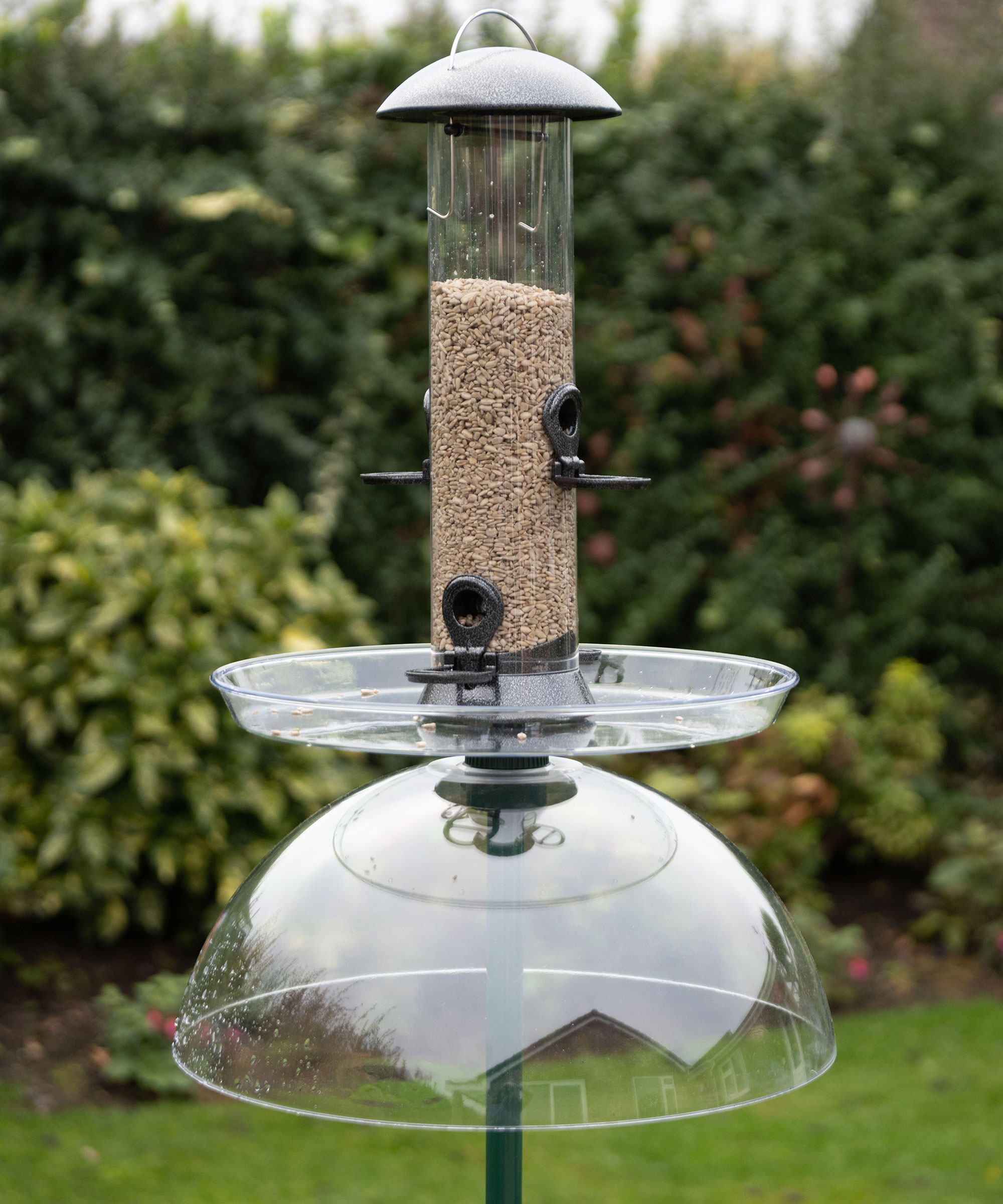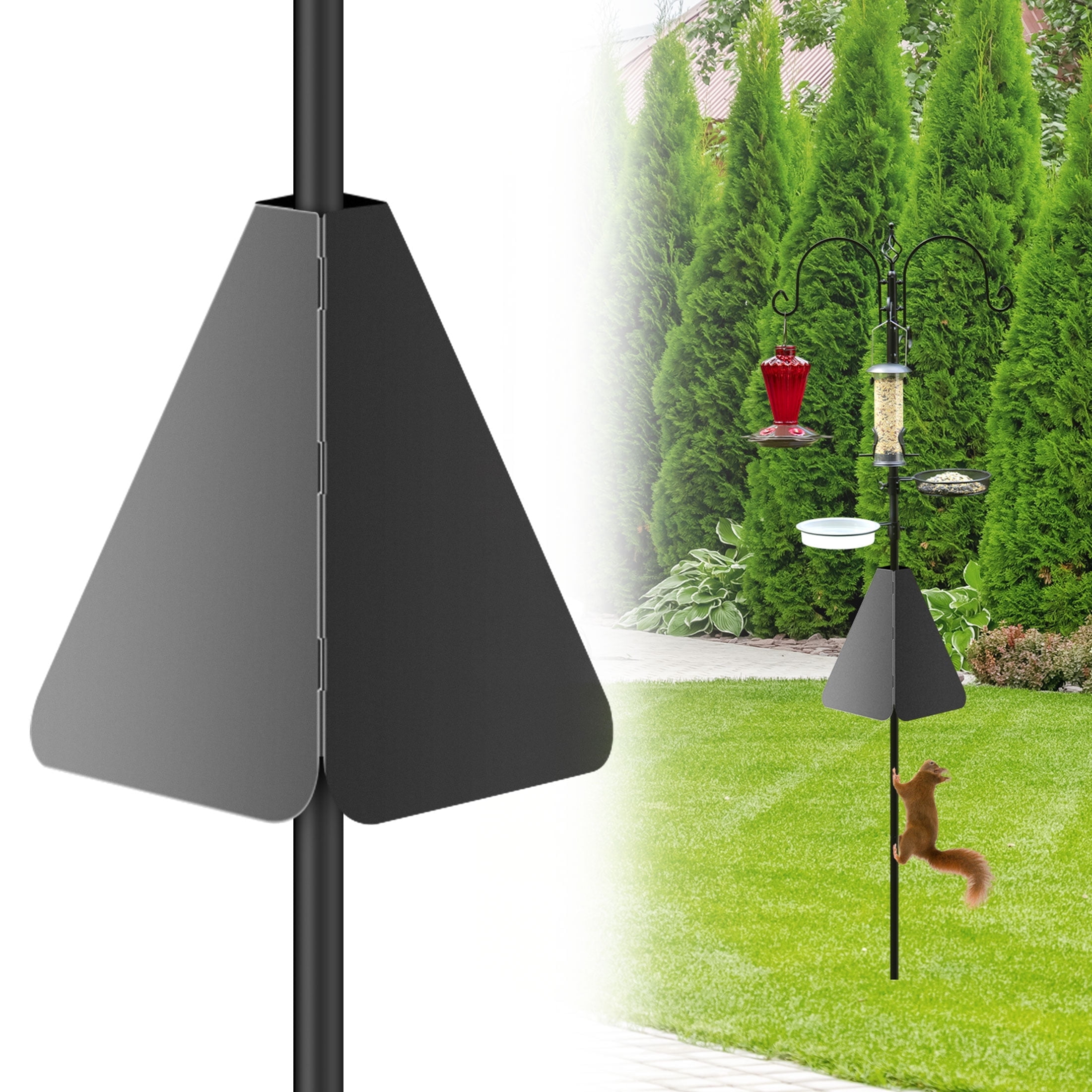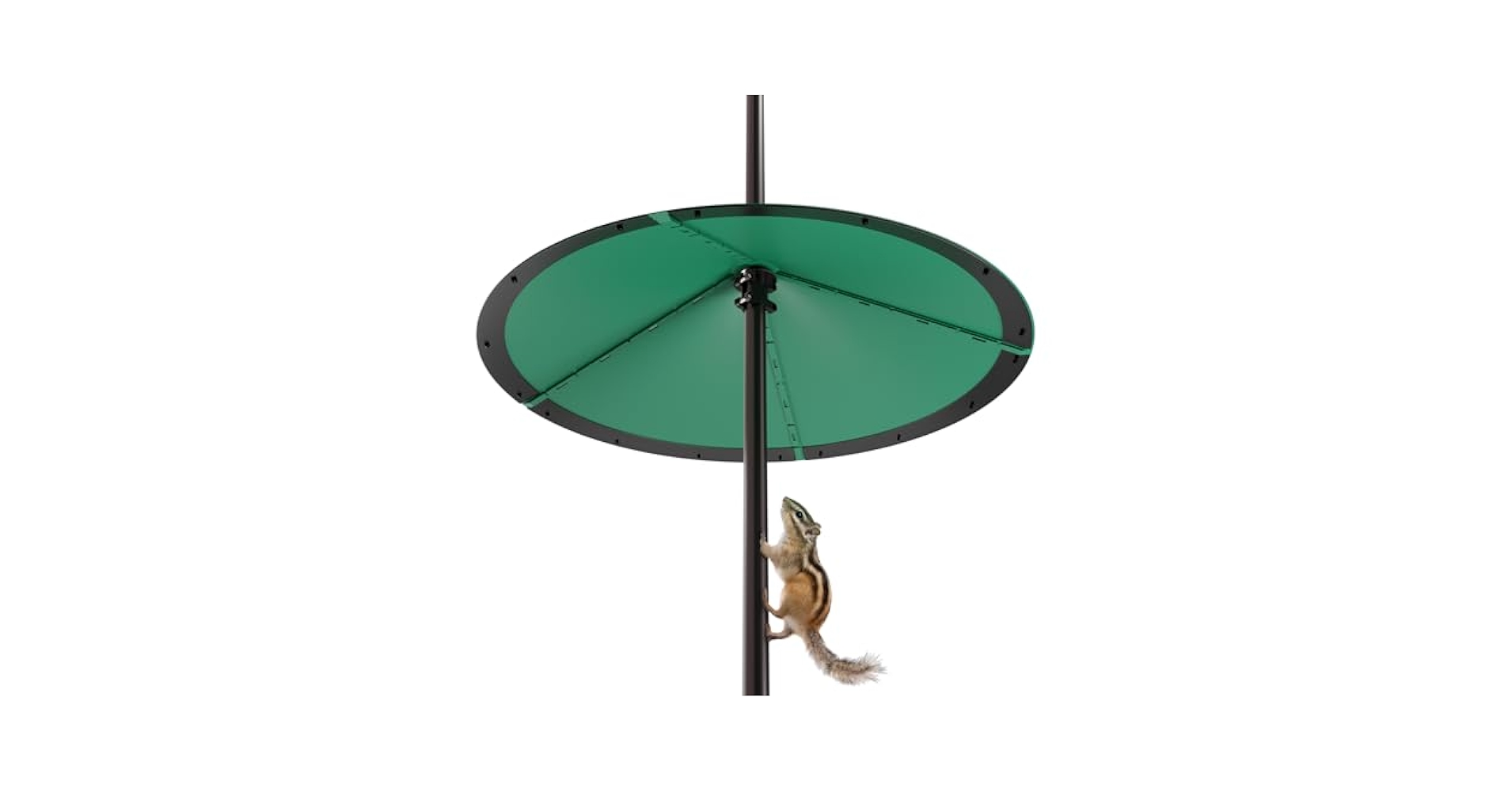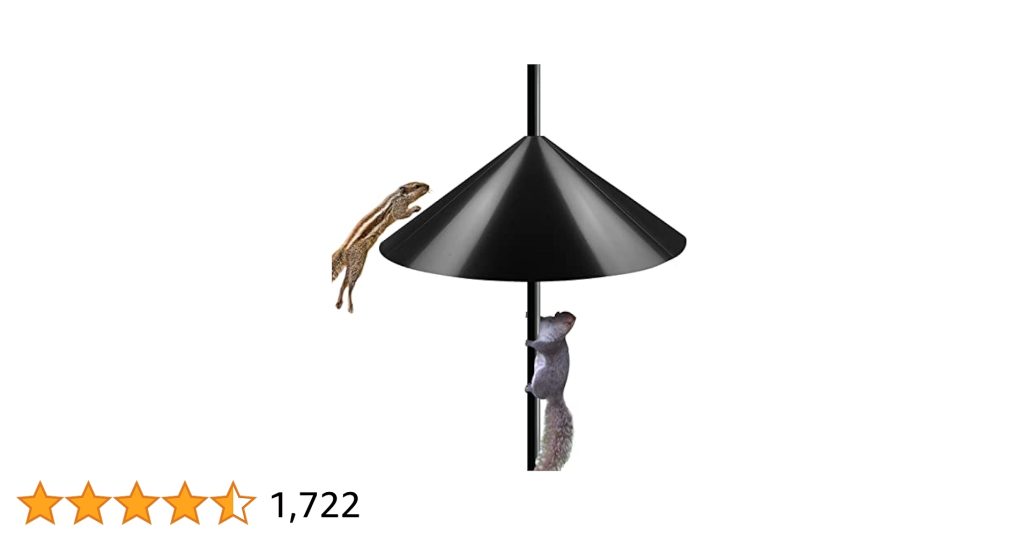Have you ever set up a bird feeder only to find squirrels or pesky critters stealing all the seeds? It’s frustrating, right?
That’s where a baffle for a bird feeder comes in. This simple device can protect your feeder and keep your feathered friends happy and well-fed. If you want to learn how a baffle works and why it’s a game-changer for your backyard birdwatching, keep reading.
You’ll discover easy tips to make your bird feeder more effective and enjoy more visits from beautiful birds.
Purpose Of A Bird Feeder Baffle
A bird feeder baffle helps keep squirrels away. Squirrels climb poles and eat seeds meant for birds. The baffle acts as a barrier, making it hard for squirrels to reach the feeder. This keeps more food for the birds and stops squirrels from damaging the feeder.
Bird feeder baffles also protect birds from predators like cats and hawks. These barriers give birds a safe space to eat. Birds can feed without fear, which helps them stay calm and healthy.
Weather protection is another key purpose. Baffles shield seeds from rain and snow. This keeps the food dry and fresh longer. It also helps stop mold and spoilage.

Credit: www.homesandgardens.com
Types Of Bird Feeder Baffles
Dome bafflesare shaped like half circles. They stop squirrels and larger birds from reaching the feeder. These baffles are easy to install above the feeder.
Tube bafflesare long and wrap around tube feeders. They block animals from climbing up the pole. These work well for smaller feeders.
Cone baffleslook like upside-down cones. They fit below feeders on poles. The shape makes it hard for animals to climb past.
Hanging baffleshang above feeders on a wire or chain. They stop animals from jumping down. Pole-mounted bafflesattach to the pole below the feeder. They block climbing animals.
Materials Used For Baffles
Metal bafflesare strong and last a long time. They stop squirrels well because they are slippery and hard to chew. These baffles often have a shiny surface that can scare animals away. They resist weather damage like rain and sun. But metal baffles can get hot in the sun, which may bother birds.
Plastic bafflesare light and easy to move. They do not rust and come in many shapes and colors. Plastic baffles can be less strong than metal ones. Some plastics may break under strong wind or cold weather. They are good for small feeders and places with mild weather.
Wooden baffleslook natural and fit well in gardens. They are easy to build at home using simple tools. Wood may absorb water and get soft or moldy over time. These baffles can be painted or treated to last longer. Birds often feel safe near wooden baffles because they blend with trees.

Credit: www.walmart.com
How To Install A Baffle
Choose a spot for the baffle. It should be above the bird feeder. The baffle keeps squirrels away. Make sure it’s high enough. Birds need easy access. Avoid placing it too close to trees. Squirrels can jump from trees.
Fasten the baffle tightly. Use strong materials. Ensure it doesn’t wobble. Wobbly baffles can fall off. Check the screws regularly. Tighten them if needed. A secure baffle lasts longer.
- Placing the baffle too low.
- Not securing it properly.
- Choosing weak materials.
- Ignoring nearby jumping spots.
- Not checking for stability.
Benefits Of Using A Baffle
Baffles help reduce seed wasteby stopping squirrels and other animals from reaching the feeder. This keeps more food for the birds. Less seed on the ground means fewer pests and less mess.
Bird visits increasebecause feeders with baffles feel safer. Birds can eat without being chased away. More birds come and stay longer, making birdwatching fun.
Baffles protect the feederfrom damage. They stop animals from chewing or hanging on the feeder. This helps the feeder last longer and saves money on replacements.

Credit: www.amazon.com
Diy Bird Feeder Baffle Ideas
A baffle keeps squirrels and other animals away from your bird feeder. Using household itemscan make great baffles.
- Old plastic bowls or pots turned upside down work well.
- Cut a large soda bottle and place it around the feeder pole.
- Use metal pie pans to create slippery barriers.
Creative designs include painting or decorating baffles to blend with the garden. This also makes the feeder area look nice.
Cost-effective solutions save money and reuse items you already have. This helps keep squirrels off without buying new gear.
Frequently Asked Questions
What Is The Purpose Of A Bird Feeder Baffle?
A bird feeder baffle prevents squirrels and other pests from reaching bird food. It protects seed from being wasted. This helps keep the feeder clean and birds safe while ensuring food lasts longer.
How Does A Baffle Protect Bird Feeders?
Baffles block access to feeders by creating a physical barrier. They are usually dome- or cone-shaped. This stops squirrels and larger animals from climbing or jumping onto feeders.
Where Should I Place A Bird Feeder Baffle?
Install the baffle above or below the feeder, depending on its design. Position it where squirrels can’t bypass it by jumping from nearby structures or trees.
What Types Of Baffles Work Best For Bird Feeders?
Cone-shaped and cylindrical metal or plastic baffles are most effective. Choose weather-resistant materials for durability. The size should fit your feeder and block common pests.
Conclusion
A baffle helps keep unwanted animals away from bird feeders. It blocks squirrels and other pests from reaching the food. This keeps birds safe and food clean. Installing a baffle is simple and effective. It saves you from constant refilling and damage.
Birds enjoy feeding without disturbance. Choose the right size and shape for your feeder. A baffle makes bird watching more peaceful and fun. Protect your feeder and help birds thrive.
